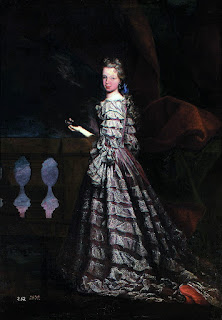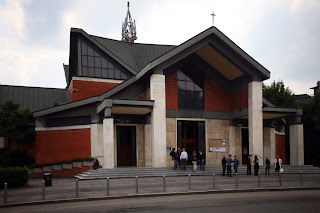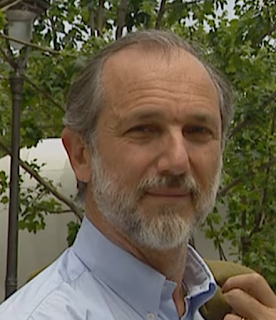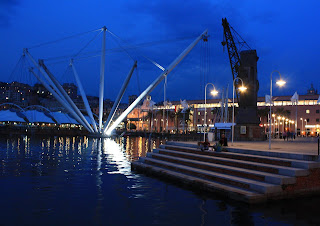Political refugee knighted by Queen Victoria
 |
Panizzi was a friend of the British Lord
Chancellor, Henry Broughton |
Sir Anthony Panizzi, who as Principal Librarian at the
British Museum was knighted by Queen Victoria, was a former Italian
revolutionary, born Antonio Genesio Maria Panizzi in Brescello in what is now
Reggio Emilia, on this day in 1797.
A law graduate from the University of Parma, Panizzi began
his working life as a civil servant, attaining the position of Inspector of
Public Schools in his home town.
At the same time he was a member of the Carbonari, the
network of secret societies set up across Italy in the early part of the 19th
century, whose aim was to overthrow the repressive regimes of the Kingdoms of
Naples and Sardinia, the Papal States and the Duchy of Modena and bring about
the unification of Italy as a republic or a constitutional monarchy.
He was party to a number of attempted uprisings but was forced
to flee the country in 1822, having been tipped off that he was to be arrested
and would face trial as a subversive.
Panizzi found a haven in Switzerland, but after publishing a
book that attacked the Duchy of Modena, of which Brescello was then part, he
was sentenced to death in absentia by a court in Modena.
Threatened with expulsion from Switzerland, with Modena
pressing the Swiss government to allow his arrest, he fled again, which is how
he came to arrive in England in 1823.
Almost destitute by the time he reached London, he met a fellow
revolutionary, the poet Ugo Foscolo, who was exiled in England, who gave him a
letter of recommendation that enabled him to find work in Liverpool as a teacher
of Italian.
 |
Sir Anthony Panizzi was the subject
of a caricature in Vanity Fair magazine |
The job made him only a meagre living, but while in
Liverpool he was befriended by Henry Broughton, a lawyer and politician who was
destined for high office. When Broughton
became Lord Chancellor in 1830, he remembered Panizzi and smoothed the way for
him to be appointed Professor of Italian at the newly-formed University of
London (now University College, London).
Soon afterwards Panizzi obtained the post of Extra-Assistant
Keeper of Books at the British Museum library and in time worked his way
through the levels of administration at the museum to be Assistant Librarian
(1831–37), Keeper of Printed Books (1837–56) and finally Principal Librarian
(1856–66).
His appointment in that role met with some opposition,
partly because, despite being a British subject since 1832, he was seen as unsuitable
on account of his non-British heritage. There
were also stories that he had been so poor in his early days in London he had
resorted to hawking items on the street in order to feed himself.
Yet Panizzi had impressed the hierarchy at the British
Museum during his tenure as Keeper of Printed Books, when he increased the
library’s stock from 235,000 to 540,000 books, making it at the time the
largest library in the world.
Although he ceased to be involved directly in the
Risorgimento movement in Italy, he continued to further the cause of Italian
liberty through his friendships with influential Liberal statesmen in England, including
two prime ministers in Lord Palmerston and William Ewart Gladstone, whom he
took to Naples to see for himself the inhumane conditions in which political
prisoners were kept.
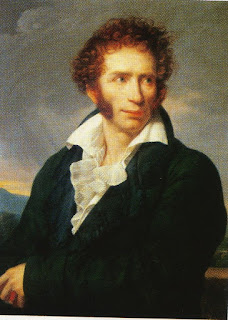 |
Panizzi met the exiled poet Ugo
Foscolo in London |
He could, in fact, have taken an active role in Italian
politics after unification, but declined invitations from Giuseppe Garibaldi
and Count Camillo Benso di Cavour, the first prime minister of the united
Italy, to serve as a senator or as a member of the Council of Public
Instruction.
Instead, he remained in London, where he was knighted in 1869,
three years after retiring, for his extraordinary services to the British
Museum library.
His achievements covered a diverse range, from devising a
new system for cataloguing books using the 91 Rules code, from which the current
ISBD (International Standard Bibliographic Description) system evolved, to
designing a shelf support – the ‘Panizzi pin’ – to stop wooden book shelves
from wobbling.
Panizzi died in London in 1879 and was buried in the Kensal
Green Catholic Cemetery.
The British Museum library became simply the British Library
in 1973, although it continued to be housed in the museum’s buildings on Great
Russell Street in Bloomsbury until moving to a new purpose-built facility on
Euston Road in 1997.
The British Library has a staff meeting room called the
Panizzi Room and the former Principal Librarian is remembered in the annual Panizzi
Lectures.
 |
| Piazza Matteotti and the church of Santa Maria Nascente |
Travel tip:
The small town of Brescello is about 25km (16mls) northwest
of Reggio Emilia, on the south bank of the Po river. It has a pleasant central
square, the Piazza Matteotti, dominated by the parish church of Santa Maria
Nascente. Brescello makes a good deal of
its association with the Don Camillo novels of author Giovannino Guareschi,
having been chosen as the setting for a series of films made in the 1950s and
1960s about a local priest, Don Camillo, and his constant run-ins with Peppone,
the communist mayor, in what was meant to be a typical small town in rural
Italy in the years after the Second World War.
There is a museum dedicated to the two characters, while visitors to the
church of Santa Maria Nascente can see the crucifix that appeared in the films to
speak to Don Camillo.
 |
| Piazza Prampolini is an attractive square in Reggio Emilia |
Travel tip:
Positioned between Parma and Modena along the path of the
Roman road known as the Via Emilia, the city of Reggio Emilia is often missed
out on the tourist trail but the wealth of attractive squares within the
hexagonal lay-out of the old city are well worth a traveller’s time. The city –
or, at least, the surrounding province – is thought to be the home of Italy's
world famous hard cheese, Parmigiano Reggiano, and is also credited with being
the area of Italy from which the country adopted the tricolore as the national
flag, with evidence that a short-lived 18th century republic, the Repubblica
Cispadana, had a flag of red, white and green.

